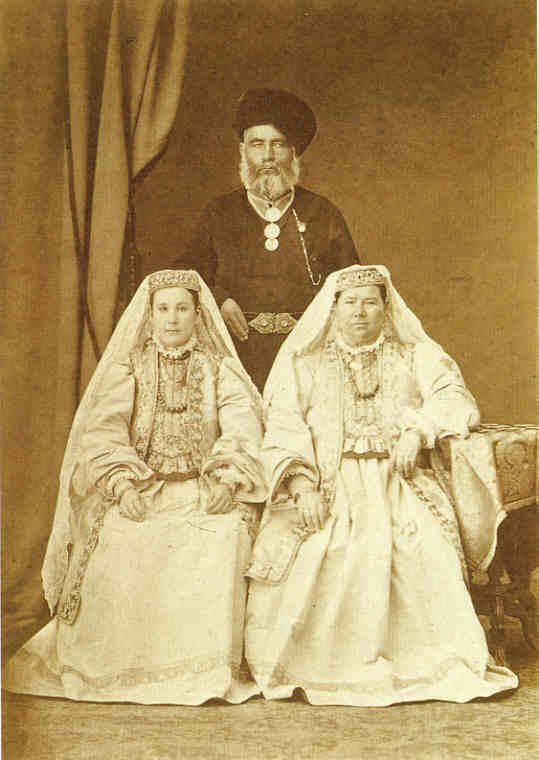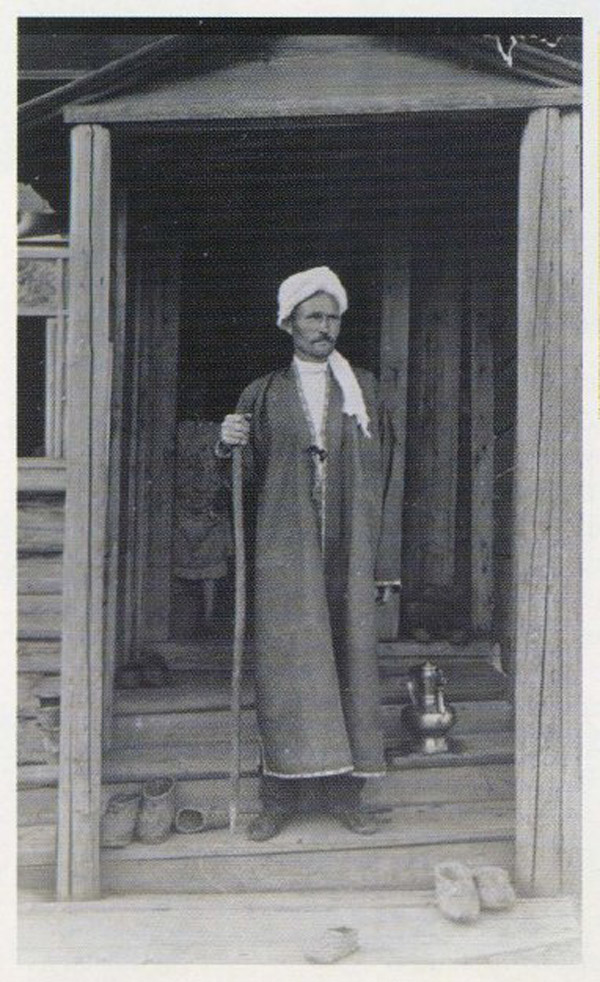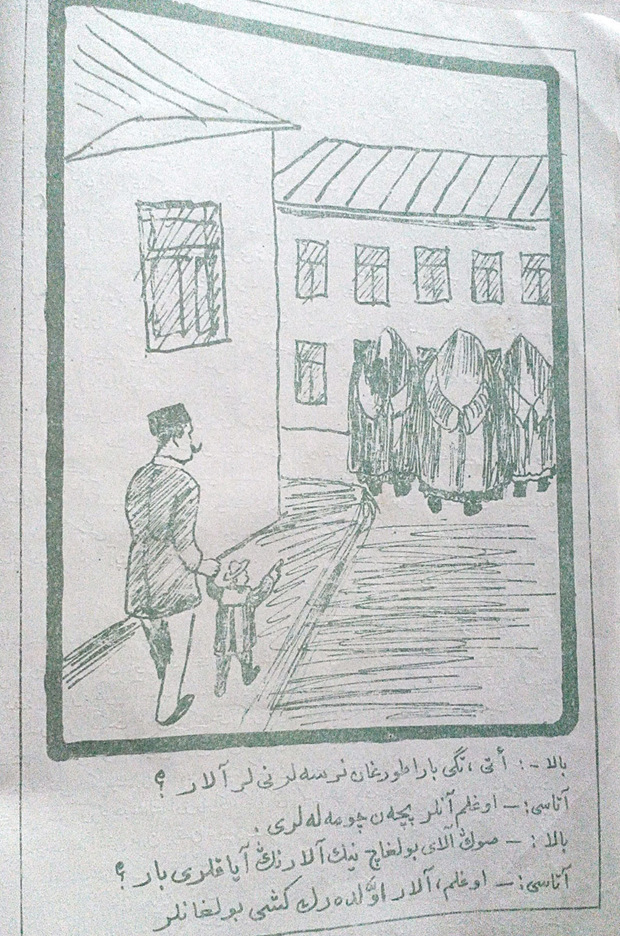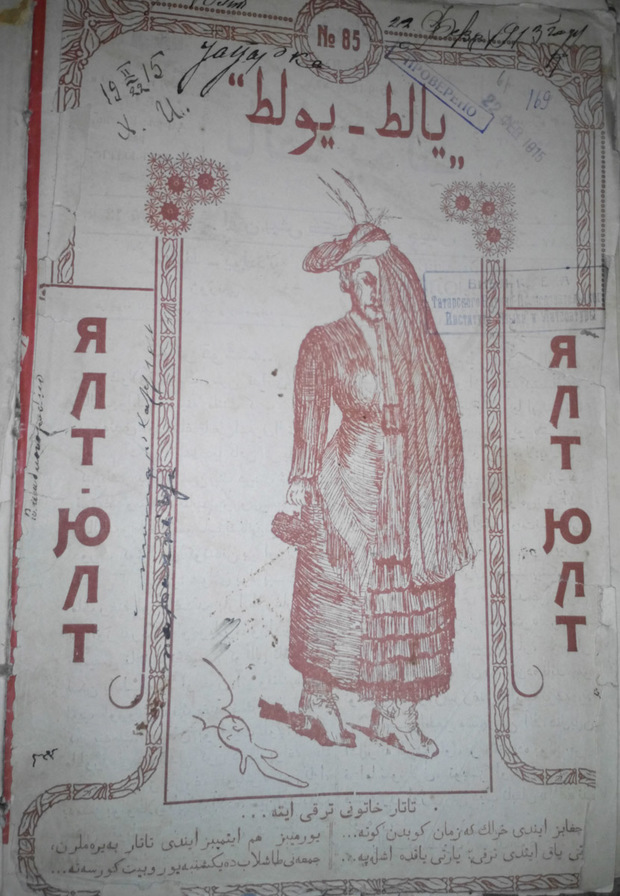Bokharian fashion: influence of Middle Asia on the Tatars’ clothes
Did Tatar women use to wear hijab? What kind of clothes did imams use to have the authority?
Dina Gatina-Shafikova, a Kazan ethnographer, tells about an Eastern 'wind' of influence on national clothes. Middle Asia, where Tatar fashionistas found ideas for their costumes, and chapan (a coat) brought from Bokhara told about mullah's high authority, left a noticeable track. The explorer answers the questions about Tatar women's hijab, kalfak and nikab in a column of Realnoe Vremya.
Fashionable tendencies and political conjuncture
Nowadays the dynamics of cultural relations (of the Tatars with the West or the East) is estimated as westernisation by wrapping it into a beautiful cover of 'Jadidism'. In fact, the expulsion of the East from the European Tatars of Volga-Ural region (or Tatar Europeans) was only during the Soviet era (partially). In other words, Tatar men wearing European costumes, emancipated Tatar dames dressed in clothes of European fit with open faces and hair is a widely promoted brand (speaking about Tatar costume in modern language). This kind of image was created on the basis of a minority that was familiar with bourgeois lifestyle and western set of values. It cannot be said it was a conscious falsification, no. It was an attempt to civilise the material and spiritual culture of the people by cultivation of the memory about progressive Tatar intelligentsia that brings Russian-European traditions of wear and daily routine norms to the masses.
The surrounding society, tendencies, their own preferences and, finally, fashion are the initial points that explain the choice factor of the clothes a person wears: any society creates certain behaviour standards, which is supposed to be a norm in a concrete environment. In other words, social norms is a commonly accepted convention of rules of behaviour, and correspondence to them separates the norm from deviation.

And what was the foundation for a faithful Tatar man at the end of the 19 th – beginning of the 20th century? It was a Muslim paradigm called 'adab' (moral) that is closely connected with morality ('akhlyak'). On the basis of Quran and Prophet Mohammed's Sunnah, theologians created a firm social statement that strictly regulated different aspects of the Muslims' life.
And here A. Frank's words are suitable: 'A Muslum associated the status of Muslim with Muslim clothes, and, consequently, a person wearing clothes à la Russian was suspected of departing from the community and become Christian.' The very fact that modern tendencies have several movements closely connected with both religious views and political conjuncture becomes more interesting.
Judging imam's authority by his chapan
Commercial relationships of the Tatars with Middle Asia, undoubtedly, had an impact on the lifestyle and clothes. Widely popular among the Tatars so-called Eastern cloth was purchased and used for dress making. Middle Asian or Bokharian cloth (mainly silk) gained in popularity. Bokharian cloth was made of cotton or half-silk fabric; silk fabric was a rarer thing. The most popular cloth like edres, bikasab, sarancha and benares was widely spread in Turkmenistan too.
As N. I. Vorobyov noted, chapan and its Tatar variants – djilyan and chikmen – appeared recently, according to the Tatars. Djilyan and chikmen came in the 18 th century, and chapan – even in the middle of the 19th. One old Tatar woman told when she was a child, they peeped in the crack at a mullah who was passing by and had a coloured Bokharian chapan. At that times it was a wondrous thing.

Mainly the superiority and rarely rich Tatar men used to wear chapans to go to the mosque or ceremonial dinner. It was used as an outdoor clothing.
It should be remembered that trends formed elites. Elements of Eastern clothes, separate accessories or entire costumes were to stress the status of the owner. Any imam who put a chapan on wanted to demonstrate that he had been in Bokhara, first of all, and that his knowledge and authority a priori were worthy of respect.
'Hijab' debate
Speaking about a costume of an average-sized Tatar woman at the end of the 19 th century, we cannot find a certain standard for her clothes. It is necessary to take into account several aspects:
— age differentiation (only an unmarried young girl could be allowed to have her head uncovered)
— ethnic and territorial specifics (as it is known, the Volga-Ural Tatar are divided into several main groups), though many modern authors are against this division. They think it leads to an extra fragmentation of the nation. However, this division is appropriate if we speak about clothes;
— moreover, we cannot forget about a social factor (lifestyle in urban and rural environments was different. It had a direct impact on all spheres).

Raising such a crucial issue as women's headdress, many people will oppose saying that there is a documentary proof – photos. They are right. Indeed, there are photos, and the women are real as well as their clothes. However, there are several factors. Taking photos was a luxury, it was a posed photo kept in a family, not demonstrated in public. In addition, photos belonged to urban people who accounted for 10% among the Tatars. And the fact that the photos were taken in the 20 th century is simply not taken into account.
Where did Tatar women wearing niqab and chador come from?
Another topic that was not used to be discussed is chador, Tatar's niqab. It is supposed that educated Tatar women did not use to cover their bodies completely. However, newspapers of that time raising this topic help us here. For instance, a group of women walking on the street is demonstrated on a page of Yalt Yolt magazine in 1910. Only women's feet are seen. The cover of the same magazine in 1915 shows a picture of a woman (a woman is divided into two parts: European fit dress with a hat and chador). The illustration shows the Tatar society has absolutely different clothes. Of course, it cannot be said this type of fashion is a characteristic of Tatar women. It probably came from Middle Asia together with pupils, pilgrims and imams.

Remembering about their roots, modern girls often ask themselves a question: what clothes did our ancestors wear? Despite their investigations, our middle-aged generation replies that our grandmothers did not wear such clothes and did not wrap themselves up. Unfortunately, a problem of traditions arises here because a link between generations was lost. Today we are trying to construct and recreate but often imposing certain standards.
It is not correct to talk about clothes single-mindedly. Living, working and contacting with other people, the Tatars adopted and interpreted things, changed them according to their own taste but never compromised their principles.